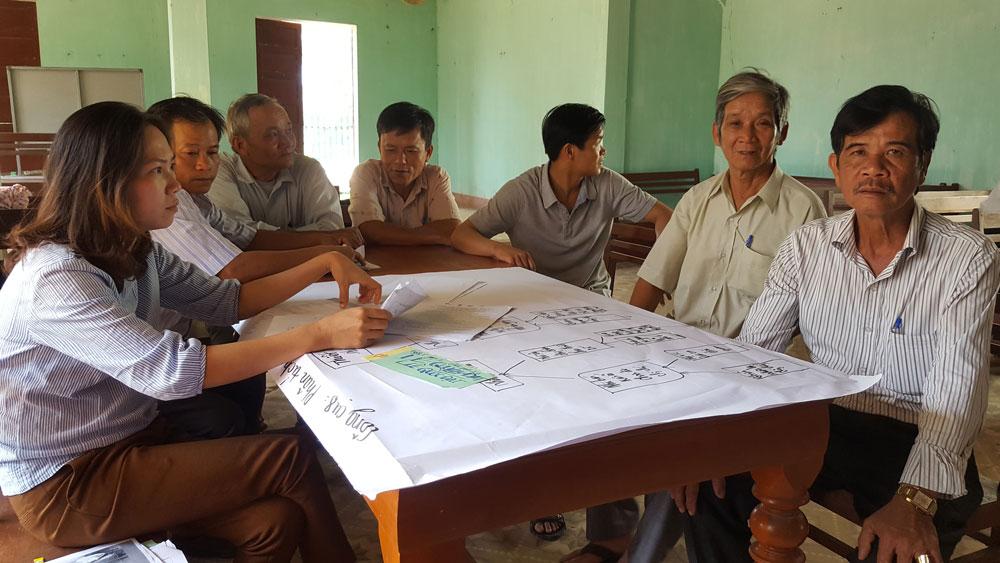
 Feature Article
Feature Article

Quang Ngai province, 1 March 2018 – Fifteen local officers attended Binh Thanh commune’s first day of community-based disaster risk management (CBDRM) training. The seven-day training is organized by UNDP, the Viet Nam Disaster Management Authority (VNDMA), and CARE International in Vietnam. CBDRM training is an important element of the Green Climate Fund (GCF)-supported project “Improving resilience of vulnerable coastal communities to climate change related impacts in Viet Nam.”
The CBDRM training equips commune officials with the skills to assess local vulnerabilities and risks by engaging community residents on their knowledge and experiences through baseline surveys and assessments. Participants also learn how they can effectively implement climate change adaptation activities related to resilient housing, livelihoods, and mangrove regeneration.
“As a local authority, I can disseminate the information I learn in this training through local commune meetings,” said Ms. Nguyen Thi Thu Vy, a staff of Binh Thanh commune. Vy felt confident that the course would equip her with essential knowledge on mangrove management, resilient housing, and gender inclusion, which she could further share to other local authorities. “Through the knowledge I acquire in this course, I will be able to further inform the commune about the project goals and be able to conduct awareness-raising around the need to protect mangroves and how to pick storm resilient housing options,” she explained.
Regarding the integration of gender, Red Cross trainer, Ms. Nguyen Thu Le Tuyen, told UNDP that she has been stressing the importance of collecting data on the specific disaster preparation and response experiences of women. Tuyen also stated, “I hope my training benefits the people in the local community. The training allows local officers to evaluate and monitor vulnerabilities in the community and identify climate risks at the sites. Based on findings in the community, the local authorities can provide solutions to reduce disaster risk.” She will continue to work to keep the content engaging while informative in future trainings to attract the participation of the commune staff.
Viet Nam is no stranger to CBDRM – in fact, the Government CBDRM Program 1002 has been in place since 2009 and Viet Nam was one of the first countries to have issued a national program. Program 1002 has two components: (1) Strengthening the capacity for managing and implementing CBDRM for local officers at all levels, and (2) Improving communication and education to enhance the capacity of communities in disaster risk management. The CBDRM trainings as part of the GCF project integrate mangrove management and resilient housing best practices and promote gender inclusion as essential elements to sustainable success.
By May 2018, GCF-supported CBDRM trainings will be carried out in sixteen communes within Quang Ngai province. The province was selected as the site for testing the materials so that the toolkit can be finalized for upscaling in all 28 coastal provinces. Locally-gathered information on critical risks will be invaluable inputs to future budget planning and decision-making within the Government.
 Latest News
Latest News
- Integrating Disaster Risk Reduction into Socio-economic Development Planning processes in Viet Nam (07/04/2022)
- Vietnamese Business Networks Responding to Disasters, Climate Change, and Epidemics (15/10/2021)
- Launch of Student Communications Competition on Resilience to Climate Change and Disasters (12/10/2021)